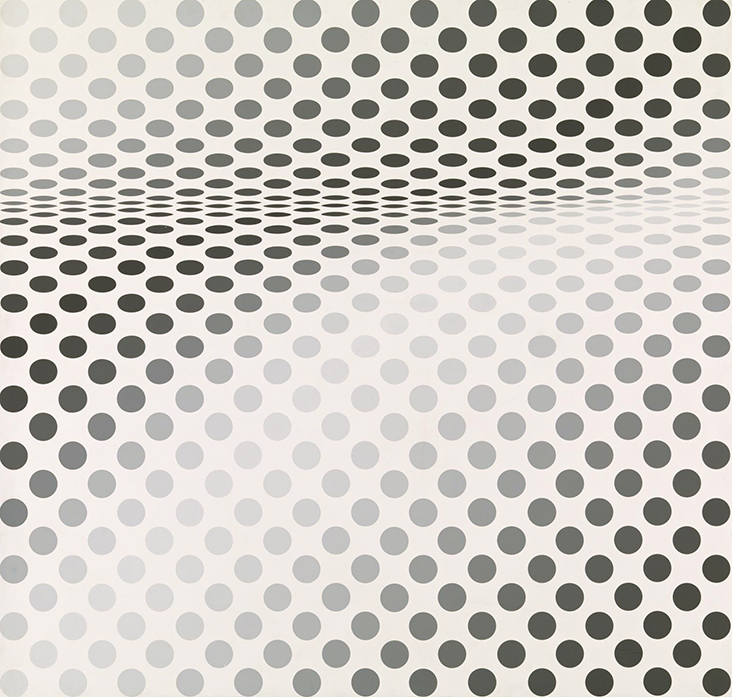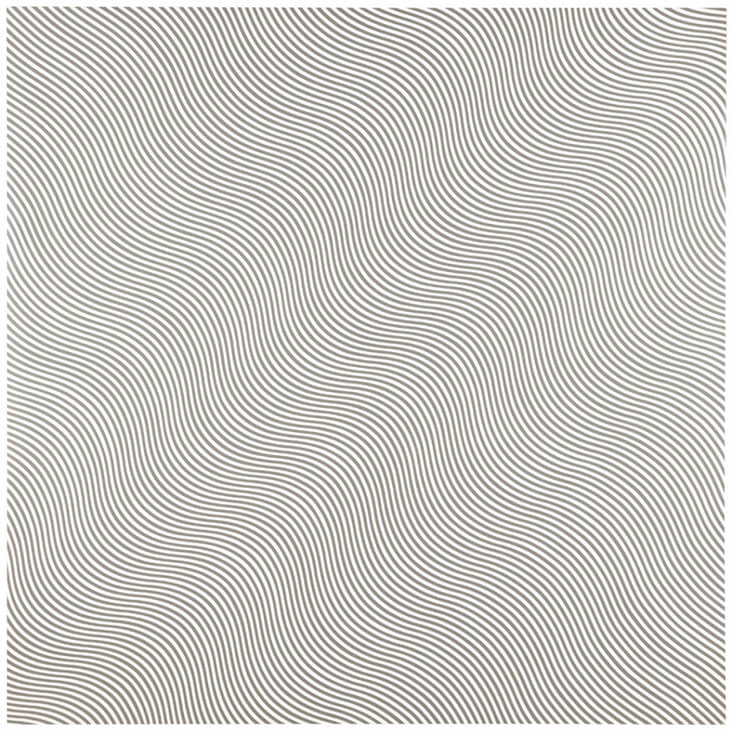FS Colour Series: MIRAGE GRAY Inspired by Bridget Riley’s Shimmering Silver
Shimmering silvers like MIRAGE GRAY are a hallmark feature of British artist Bridget Riley’s art, allowing her to create mesmerising depth, movement and space. Riley is widely recognised today as the iconic leader of 1960s Op Art, and she pushed the visual effects of pattern to the extreme, exploring how dots, wavy lines and patterns could induce hallucinogenic effects like warping, dizziness and afterimages. Such is the impact of her art, some have even reported fainting after staring too hard. Working with shades of black, white and grey throughout the 1960s gave Riley room to focus exclusively on shape, line and design, and the ways they could become activated, as if living and breathing. She observed, “In my earlier paintings, I wanted the space between the picture plane and the spectator to be active.”
Riley was born in London in 1931 to a family of artists who encouraged her choice to pursue a creative career. She trained as an artist in her home city of London, first at Goldsmith’s College, followed by the Royal College of Art. Riley worked as an art teacher in her early career while pursuing her art when she could. The 1960s were a breakthrough period when she zeroed in on black and white optical patterns and the surprising and unexpected effects they could invoke.
Black to White Discs, 1962 is an early example of how simple, yet effective Riley’s Op Art could be. A diamond of grey and black dots is activated by the varying of grey and black tones, which create a push-pull effect and the sensation of constantly flowing motion, as if the dots are moving in and out of the space around them. In the same year this work was made, Riley experienced a stroke of luck; while sheltering from a rainstorm in Victor Musgrave’s gallery, she began chatting to the owner, who offered her a solo show. Its success propelled Riley’s art into the spotlight, and in the years to follow her work was shown in several important survey exhibitions celebrating rising trends for Pop, Op and Kinetic art.
In Hesitate, 1964, Riley has become more adventurous with her dotty patterns, squashing them into a crease in the image’s top half. Again, Riley playfully arranges patches of pale grey dots with darker ones, seeing how they can mess with our perception of flat, pictorial space. A streak of silvery dots runs in a diagonal from left to right like a shaft of white light, bending into the folded crease before curling upwards on its way out.
The painting Arrest 3, 1965 moves into new territory with the wavy, fluid lines that would become Riley’s trademark motif. Here ribbons of silver, black and grey seem to twist and turn through space, moving with the constantly flowing flux of the sea. Light is scattered across the scene through the careful application of light gray tones, sometimes so whisperingly pale they almost disappear. By the time she made the painting Untitled (Diagonal Curve), 1966, Riley was in her element, pushing optical effects into daring, provocative and even uncomfortable territory. The pale and dark grey lines that wiggle back and forth in this work are so densely packed they create disorientating swelling and warping sensations; stare for long enough and they seem to hum and vibrate with the electric energy of digital interference.
In the screenprint Untitled [Nineteen Greys B], 1968, Riley creates a backdrop out of silvery grey, miming the polished sheen of hard metal glinting in the light. Dots arranged into a grid on its surface transform this flat grey into smoky, atmospheric space as they twist this way and that, sometimes fading into a hazy and indistinct blur. Sensations of motion, time and memory are collapsed here into one, revealing just how brooding and enigmatic pale grey can be.





















































Leave a comment